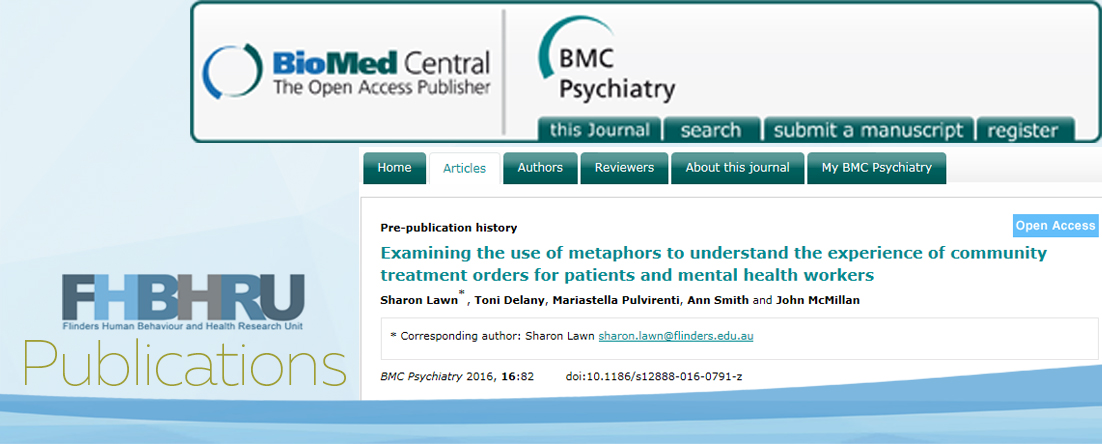
Examining the use of metaphors to understand the experience of community treatment orders for patients and mental health workers
Examining the use of metaphors to understand the experience of community treatment orders for patients and mental health workers – Sharon Lawn, Toni Delany, Mariastella Pulvirenti, Ann Smith and John McMillan.
BMC Psychiatry – Published 31 March 2016
Abstract
Background: Community Treatment Orders (CTOs) are often complex because of the ethical tensions created by an intervention that aims at promoting the patient’s good through an inherently coercive process. There is limited research that examines the complexity of CTOs and how patients on CTOs and workers administering CTOs make sense of their experiences.
Methods: The study involved in-depth interviews with 8 patients on CTOs and 10 community mental health workers in South Australia, to explore how they constructed their experiences of CTOs. Critical discourse analysis (CDA) was used to analyse the data, supported by NVIVO software.
Results: Analysis of the interviews revealed that patients and workers experienced the CTO process as multidimensional, including some positive as well as more negative constructions. The positive metaphor of CTOs as a safety net is described, followed by a more detailed description of the metaphors of power and control as the dominant themes, with five sub-themes of the CTO as control, wake-up, punishment, surveillance, and tranquiliser.
Discussion: Metaphors are a way that mental health patients and mental health workers articulate the nature of CTOs. The language used to construct these metaphors was quite different, with patients overwhelmingly experiencing and perceiving CTOs as coercive (that is, punishing, controlling and scrutinizing), whereas workers tended to perceive them as necessary, beneficial and supportive, despite their coerciveness.
Conclusions: By acknowledging the role of metaphors in these patients’ lives, workers could enhance opportunities to engage these patients in more meaningful dialogue about their personal experiences as an alternative to practice predominantly focused on risk. Such a dialogue could enhance workers’ reflection on their work and promote recoverybased practice. More understanding of how to promote autonomy, capacity and supported decision-making, and how to address the impacts of coercion within care, is needed..
Read the full journal article here: http://www.biomedcentral.com/1471-244X/16/82/prepub
